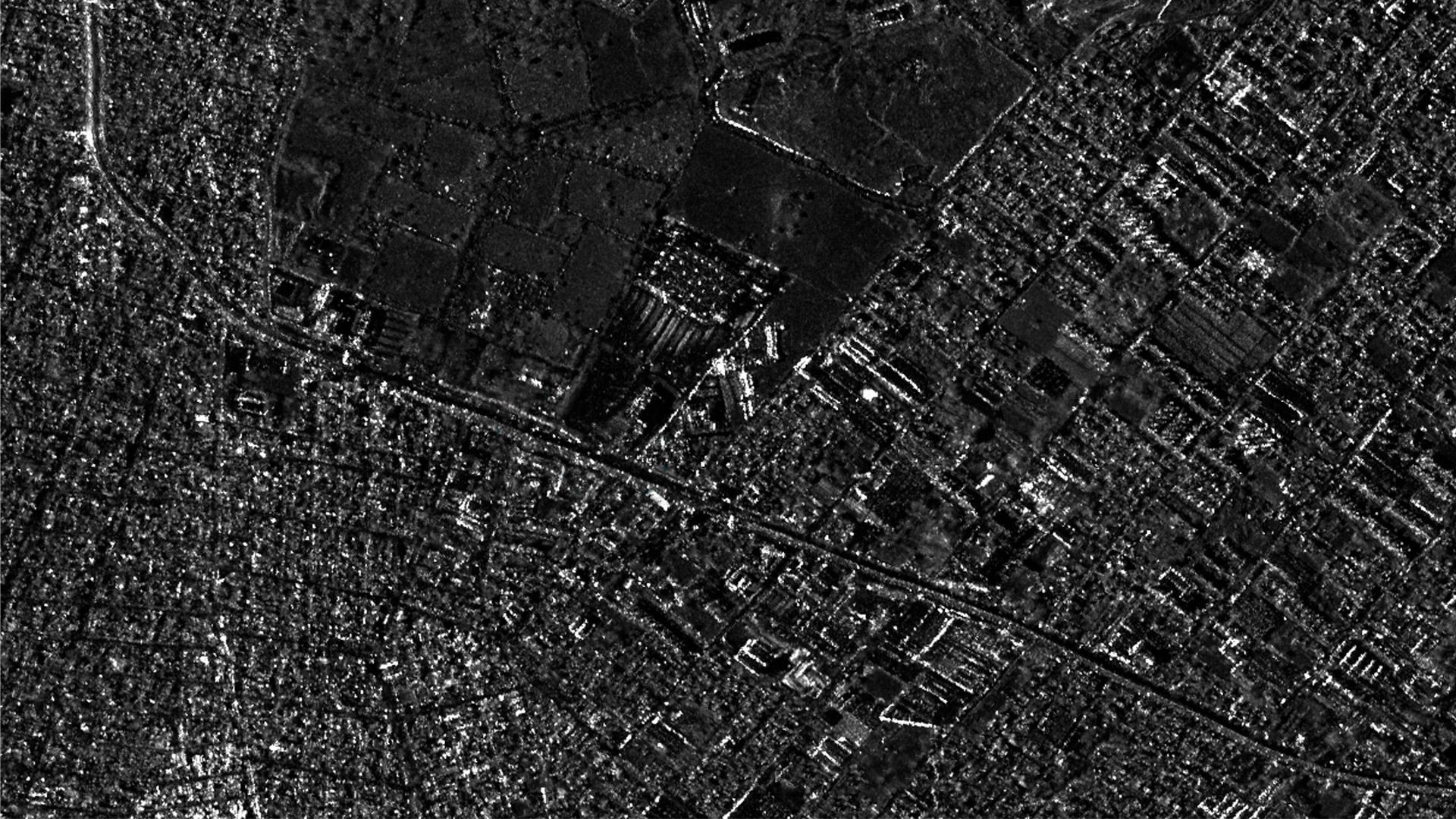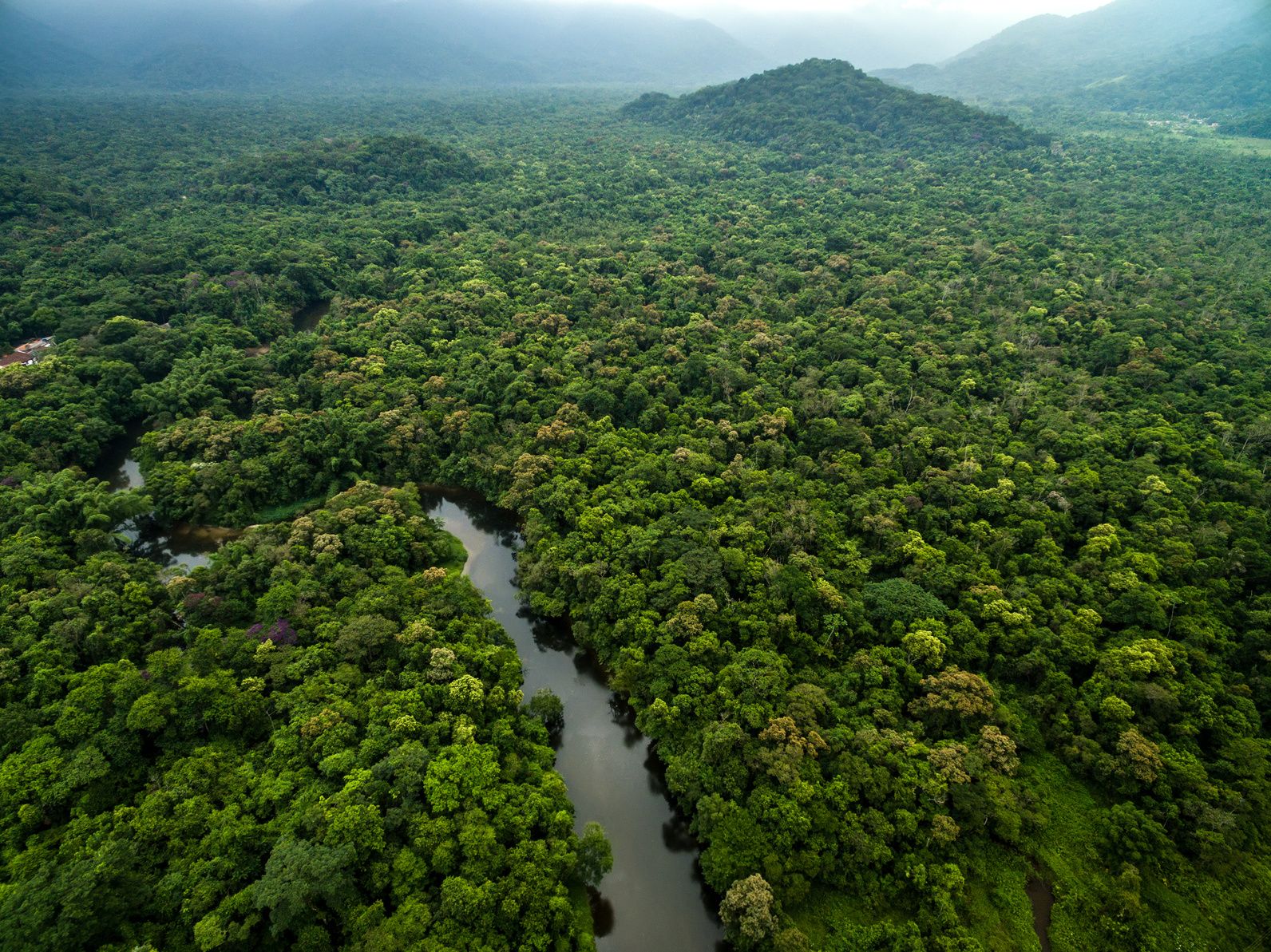
Home
Newsroom
Case Studies
various
A Case Study about Avocados
Avocados - From Farm to Table
To celebrate national avocado day, Airbus and avocados from Mexico have teamed up to provide insight on the beautiful green superfood - Where do avocados come from? Why is this area so important, and what makes this food increasingly popular?
Challenge
Where do avocados come from?
There are few places in the world where avocados grow year-round. This versatile fruit is available year-round, and the vast majority are cultivated in the Mexican state of Michoacán.
Our Solution
Satellite imagery from Airbus OneAtlas platform shows the city of Uruapan. The northern and eastern perimeter of the city, users can see the rippling ground, created from volcanic activity over many thousands of years.
Imagery shown above is 1.5m basemap imagery from Airbus.
Uruapan is part of the Trans-Mexican Volcanic Belt, stretching from Central-Southern Mexico from the Pacific Ocean, to the Gulf of Mexico. The Mexican state of Michoacán includes more than 80 volcanoes.
Imagery above displays the WorldDEM relief map from Airbus.
Michoacán is a unique area where rich volcanic soil, abundant sunshine and timely rainfall provide an ideal setting for the growth of avocados. Michoacán is the heart of the world’s avocado production. The cultural and economic effects of the avocado groves are felt everywhere in Mexico.
There are more than 42,000 avocado orchards in this municipality that produce avocados 365 days a year. Uruapan is also known for the avocado nurseries – where the journey of an avocado begins. As we zoom into parts of the city, you can see that avocado groves outline the region.
The image above displays Living Library imagery from the OneAtlas platform that displays 1.5m satellite imagery over the outer region of Northeast Uruapan.
Zooming in to view 0.5m imagery, you can see that hundreds of groves are available in this small region alone.




Image 1: An aerial view of the area gives perspective into the landscape of the groves and the surrounding area. This area is surrounded by volcanoes, which is key to the success of the growth and production of avocado trees.
Image 2: Avocados have 4 blooms per year, 1 per season. This is made possible by the varying elevations of the area that allow for the avocados to grow in different temperatures. Avocado trees bloom 4 times a year in this region.
Image 3: WorldDEM relief map shows the Elevation around this area. The yellow/orange represents the lower elevation, where the red and white represent the higher elevated areas.
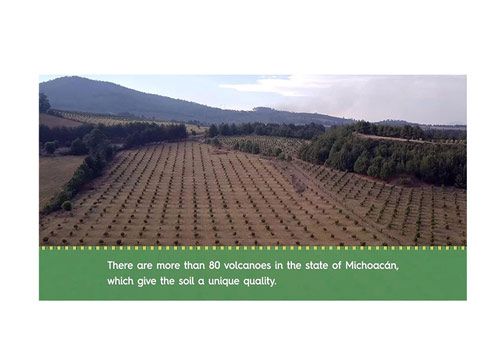


Why is this area so important?
The varying elevation also allows for many rivers and streams to feed into the groves. In fact, 75% of Mexican avocado groves use natural irrigation. In fact, local avocado nurseries (such as the one to the left) uses the natural irrigation of the land to produce hundreds of avocado plants each year.
To help the plants grow, this nursery mixes in calcium sulfate ash into the plant’s natural volcanic soil, acting as an organic fertilizer. Then, each plant is watered from the natural rivers that flow from the mountain, 2-3 times a week, depending on the temperature. Each of these young avocado plants will produce avocados in 2 years.
Avocados from Mexico are the only avocados that are supplied to the U.S. continuously throughout the year. In fact, Mexico is the only place in the world where avocados are grown year-round. These avocados represent nearly 80% of the entire avocado market in the U.S., and continues to grow.
To help the plants grow, this nursery mixes in calcium sulfate ash into the plant’s natural volcanic soil, acting as an organic fertilizer. Then, each plant is watered from the natural rivers that flow from the mountain, 2-3 times a week, depending on the temperature.
Farm-to-table: Family-run avocado orchards
Once ready, an avocado tree is transferred to a local avocado grove. Most of these farms are owned by family farmers - 80% of Mexican avocado growers own less than 5 hectares (10 acres) of land. All of these groves are certified by both the United States Department of Agriculture (USDA) and Mexico’s Department of Agriculture and Rural Development (SADAR) to ensure that all avocados exported to the United States are grown, packed and shipped according to the highest national and international standards.




Natural river in Uruapan that helps provide water to the avocado nursery.
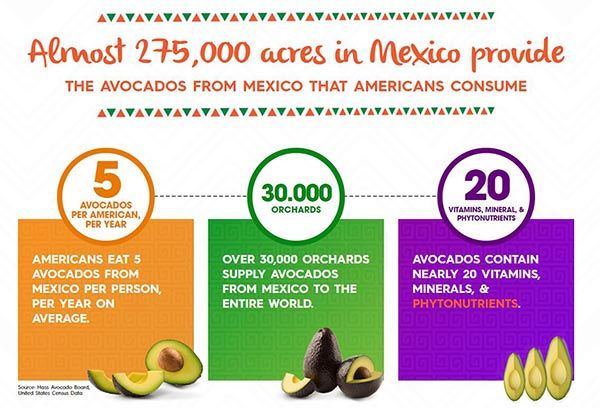
Once an avocado is ready to harvest, it can stay on the tree for 6 months, and only begins to ripen after it is picked. Each harvester has a 15 ft-long pole with a sharp end that is used to cut the avocado stem from the tree. It then drops into a bag, attached to the pole, allowing each picker to harvest up to 1,000 pounds per day. Once harvested, avocados take one day to pack and ship and 1-2 days to cross the border into the U.S., ending up in places like grocery stores and restaurants, shortly after picking.
Food Safety Management System
APEAM (Avocado Producers and Exporting Packers Association of Mexico) is constituted by more than 23,000 avocado producers and more than 50 packaging houses that export avocados to the U.S. Each box of avocados is marked with a specific orchard number and every single avocado is marked with a packing house number for trace-ability purposes. Detailed records are kept so every avocado can be traced back to the municipality, orchard and even the date and time the fruit was harvested.
At the packing house, there are inspectors from SADAR and the USDA present to ensure all orchard requirements are adhered to, before the packing house can begin the process of packing the avocados. The truck is backed into the warehouse and all openings are sealed, to ensure no pests or contamination enters the packing plant.
Samples within the packing house are cut open and inspected to make sure that no pests or foreign objects weighed, sliced and measured to ensure that no foreign objects are in the fruit.
In addition, the fruit undergoes a “dry matter” test to ensure the avocado contains the proper oil content. The higher the oil content, the better the taste. Fruit pulp is dehydrated so the oil in the fruit can be measured. All avocados shipped to the U.S. have no less than 23% dry matter – a very high industry standard.
Then, after one more safety check, they are packed, staged, and cooled for shipping. From packing to shipping, it takes 17 hours to reach the U.S. - Mexico border.
This initiative is an excellent example of trade between Mexico and the United States. The importers in the United States created the Mexican Hass Avocado Importers Association (MHAIA) which partnered with the growers and packers in Mexico (APEAM) to create the marketing brand of Avocados from Mexico. The APEAM is the Association of Producers and Packers Exporters of Avocado in Mexico. It was founded in the year 1997. It is the only Mexican cooperating partner of the United States, as well as before USDA-APHIS for the export of the Mexican avocado, it is also responsible for the promotion of the fruit in other countries always under the Avocados From Mexico brand.
In 2013, Avocados from Mexico (AFM) was created, and is the marketing arm of AREAM and MHAIA in the United States. Avocados from Mexico’s goal is to increase avocado consumption and to drive equity of the ARM brand.
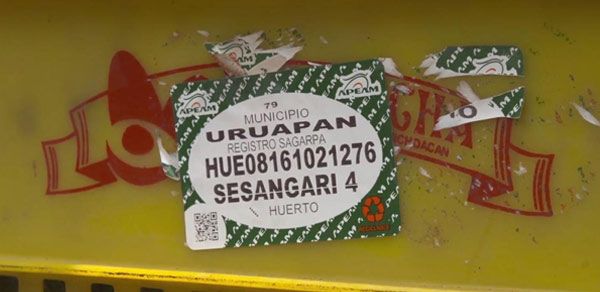

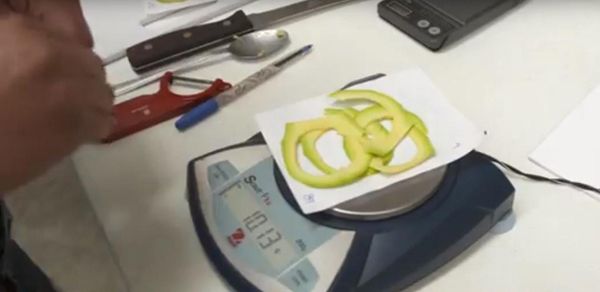
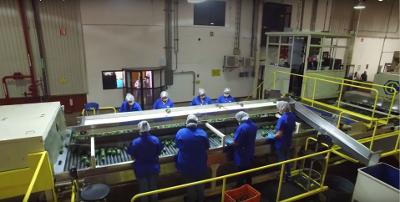
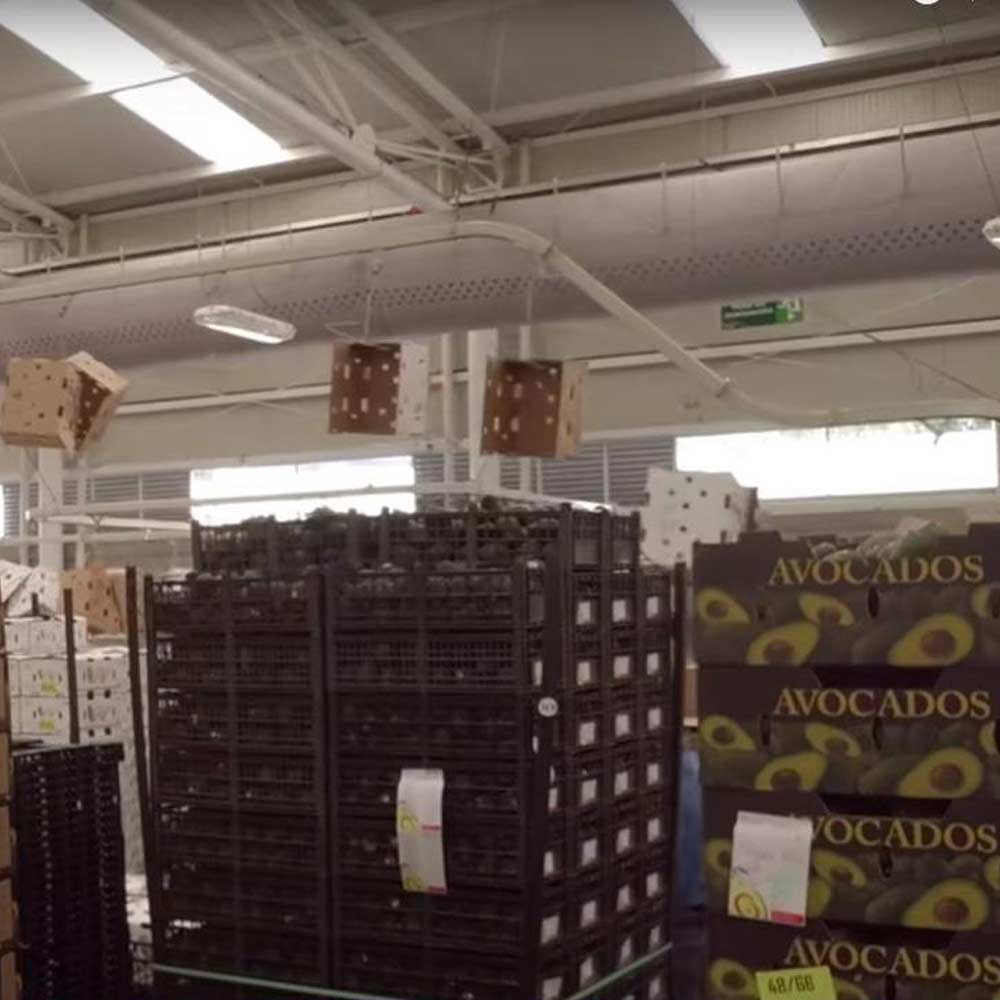

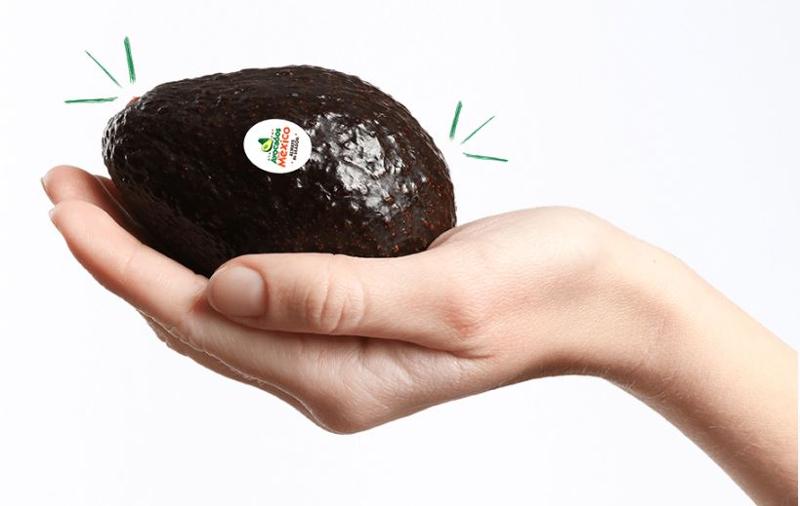
Distribution of Avocados
There are dozens of distribution centers around the country that move avocados throughout the U.S. year-round. From the border to the distribution center, it takes approximately 1-2 days. Based upon the customer’s needs, some avocados are placed in ripening rooms for immediate use or shipped hard green for future use. The avocados are shipped to wholesalers, food service outlets or directly to grocery stores and restaurant chains.

The Economic Impact of Avocados
In 2017, imports of avocados from Mexico generated $5.5 billion in spending, added 3.4 billion to the U.S. GDP and represented over 28,000 good paying U.S. jobs. These jobs paid $1.9 billion in labor income and generated $932 million in U.S, State and local taxes. In Mexico, the industry has created over 70,000 full time jobs with over 300,000 seasonal employees. The increase in these numbers over the past 20 years exposes the rapidly growing importance of Mexican avocados the economies of the United States and Mexico.
Organisation Involved
Want to know more?
Our sales team will be happy to provide you more information about this case study and how it can meet your business needs.


